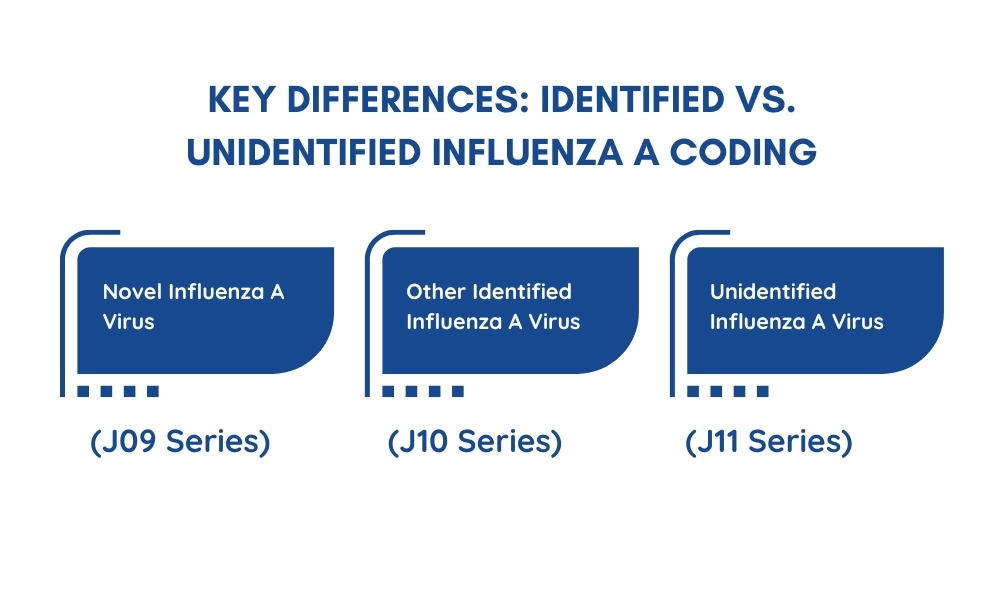Influenza A is a highly contagious respiratory illness that can lead to severe complications like pneumonia and respiratory failure. Accurate medical coding is crucial for proper diagnosis, treatment planning, and insurance reimbursement. The ICD-10 code for Influenza A falls under specific classifications based on virus identification and associated complications, ensuring precise documentation in healthcare records.
Whether coding for seasonal flu, a novel strain, or an unidentified virus, understanding the correct ICD-10 codes ensures compliance with WHO and AAPC guidelines.
ICD-10 Code Range for Influenza and Pneumonia (J09-J18)
The ICD-10 code range J09-J18 covers influenza and pneumonia, classified under Diseases of the Respiratory System by the World Health Organization (WHO). These codes help healthcare professionals accurately document and treat various influenza-related illnesses, ensuring precise reporting for insurance claims and medical records.
ICD-10 Codes for Influenza A
Influenza A is categorized based on whether the virus is identified as novel, seasonal, or unidentified. Below are the key codes used for Influenza A classification:
| ICD-10 Code | Description |
| J09.X1 | Influenza due to identified novel influenza A virus with pneumonia |
| J09.X2 | Influenza due to identified novel influenza A virus with other respiratory manifestations |
| J09.X3 | Influenza due to identified novel influenza A virus with gastrointestinal manifestations |
| J09.X9 | Influenza due to identified novel influenza A virus with other manifestations |
| J10.0 | Influenza due to other identified influenza virus with pneumonia |
| J10.1 | Influenza due to other identified influenza virus with other respiratory manifestations |
| J11.0 | Influenza due to unidentified influenza virus with pneumonia |
| J11.1 | Influenza due to unidentified influenza virus with other respiratory manifestations |
These codes differentiate influenza cases based on laboratory confirmation of the virus strain and specific symptoms. Properly selecting the ICD-10 code ensures accurate diagnosis and appropriate reimbursement.
Key Differences: Identified vs. Unidentified Influenza A Coding

1. Novel Influenza A Virus (J09 Series)
- Used for newly discovered influenza A strains (e.g., pandemic outbreaks).
- Requires laboratory confirmation to identify as a novel strain.
- Example: J09.X1 – Influenza A with pneumonia.
2. Other Identified Influenza A Virus (J10 Series)
- Covers seasonal influenza A viruses that are not classified as novel.
- Requires identification of the strain (e.g., H1N1, H3N2).
- Example: J10.0 – Seasonal Influenza A with pneumonia.
3. Unidentified Influenza A Virus (J11 Series)
- Used when the influenza virus type is unknown or not confirmed.
- Often assigned when treatment is based on clinical symptoms without lab testing.
- Example: J11.0 – Influenza with pneumonia, virus unspecified.
Properly distinguishing between these categories is critical for accurate medical coding, insurance claims, and epidemiological tracking.
Clinical Documentation and Coding Guidelines for Influenza A
To assign the correct ICD-10 code for Influenza A, healthcare providers must document:
✔ Type of influenza virus (Novel, seasonal, or unidentified).
✔ Clinical manifestations (Pneumonia, respiratory, or gastrointestinal symptoms).
✔ Diagnostic test results (PCR tests, rapid influenza tests).
✔ Presence of secondary infections (e.g., bacterial pneumonia).
Accurate documentation prevents coding errors, ensuring compliance with WHO and AAPC coding guidelines.
Common Coding Errors to Avoid
- Using J11 codes for confirmed cases – If a test confirms Influenza A, use the appropriate J09 or J10 series code instead of J11 (unidentified virus).
- Ignoring secondary conditions – If influenza leads to pneumonia or other complications, the appropriate manifestation code must be assigned.
- Incorrect sequencing of codes – For cases where Influenza A is accompanied by other infections, the primary condition must be listed first in the claim.
Proper coding ensures accurate patient records, correct billing, and streamlined reimbursement from insurance providers.
Pneumonia Associated with Influenza A
Influenza A can lead to severe complications such as pneumonia, requiring additional ICD-10 coding. Below are the relevant ICD-10 codes when pneumonia is diagnosed alongside Influenza A:
- J09.X1 – Influenza due to identified novel influenza A virus with pneumonia.
- J10.0 – Influenza due to other identified influenza A virus with pneumonia.
- J11.0 – Influenza due to unidentified influenza virus with pneumonia.
These codes ensure that both influenza and pneumonia are accounted for in medical records and insurance claims, leading to accurate treatment and reimbursement.
Other Common Influenza-Related Diagnoses
In some cases, Influenza A may lead to secondary infections or complications that require additional coding:
- J12.9 – Viral pneumonia, unspecified.
- J18.9 – Pneumonia, unspecified organism.
- B97.89 – Other viral agents as the cause of diseases classified elsewhere.
- J22 – Unspecified acute lower respiratory infection.
Proper documentation of these conditions is essential to ensure that all aspects of the patient’s illness are reflected in their medical records.
Billing, Reimbursement, and Compliance for Influenza A Coding
1. Medicare and Insurance Coverage for Influenza A
- Most insurance policies, including Medicare and Medicaid, cover Influenza A, especially for high-risk populations such as the elderly and immunocompromised individuals.
- Insurance claims must include both the primary influenza diagnosis code and any secondary conditions (e.g., pneumonia, respiratory failure).
- Incorrect coding may lead to claim denials or reimbursement delays.
2. Proper Code Sequencing for Influenza A Claims
When multiple conditions are present, sequence codes correctly to ensure accurate billing:
- Primary Code: Influenza A (J09, J10, or J11)
- Secondary Code: Any complications (e.g., pneumonia, secondary bacterial infections).
- Additional Codes: Symptoms such as fever, cough, or bronchitis if necessary.
3. Avoiding Claim Denials and Ensuring Compliance
- Verify documentation before assigning an ICD-10 code.
- Use J09 series codes only when a laboratory test confirms a novel influenza virus.
- Follow AAPC and CMS guidelines to ensure compliance with ICD-10 coding updates.
By ensuring accurate coding and compliance, healthcare providers can reduce claim rejections and ensure timely reimbursements.
Closing Note
Influenza A is a highly contagious virus that can result in mild to severe respiratory illnesses, including pneumonia and other complications. Proper ICD-10 coding is essential for accurate patient diagnosis, effective treatment, and correct insurance billing. Understanding the differences between J09, J10, and J11 series codes, along with correct documentation and sequencing, ensures compliance with WHO and AAPC standards.
For healthcare providers and medical coders, staying up-to-date with influenza coding guidelines is crucial to avoiding claim denials and ensuring proper reimbursement for services rendered.





